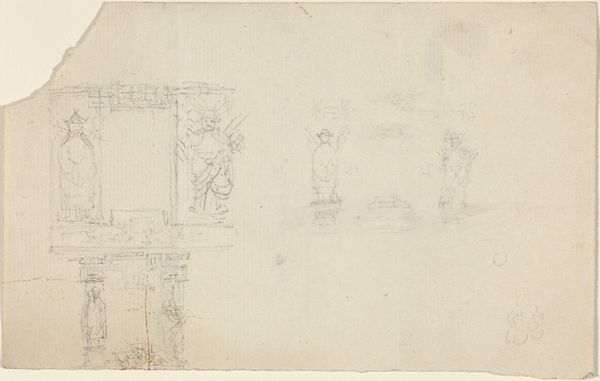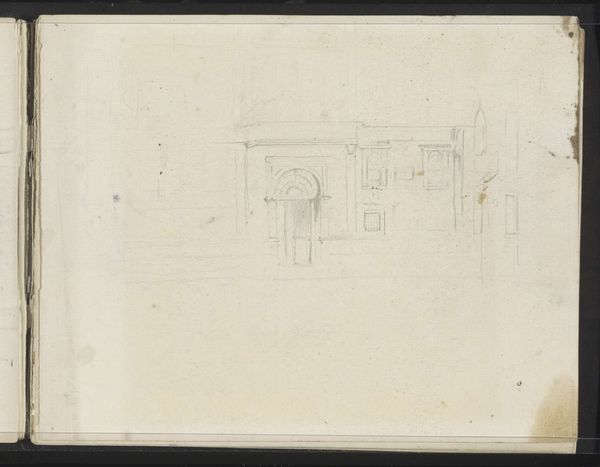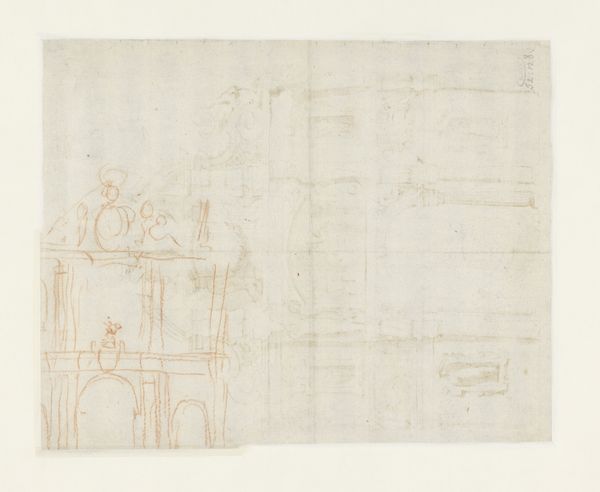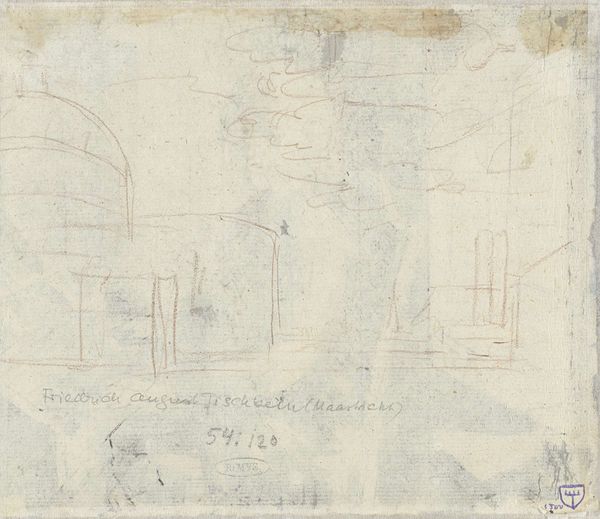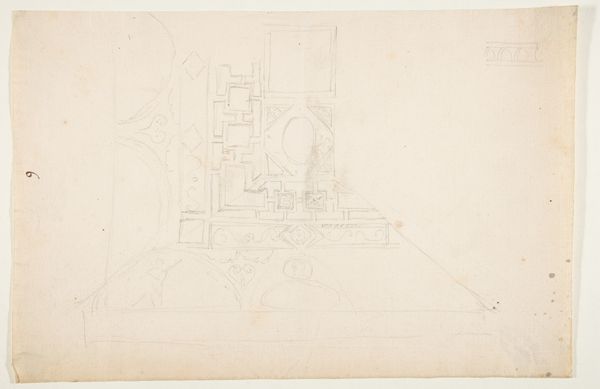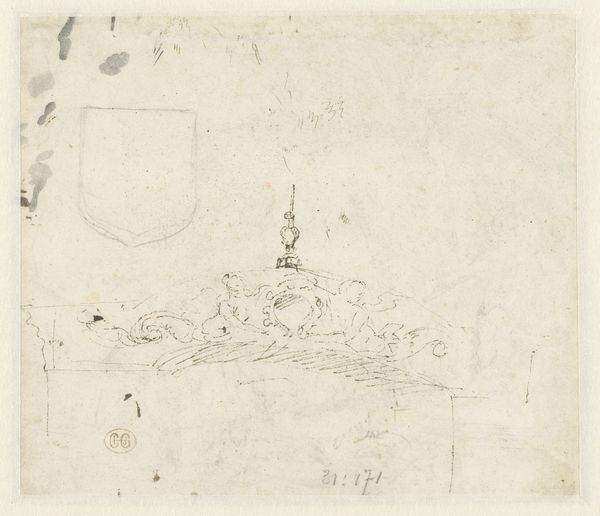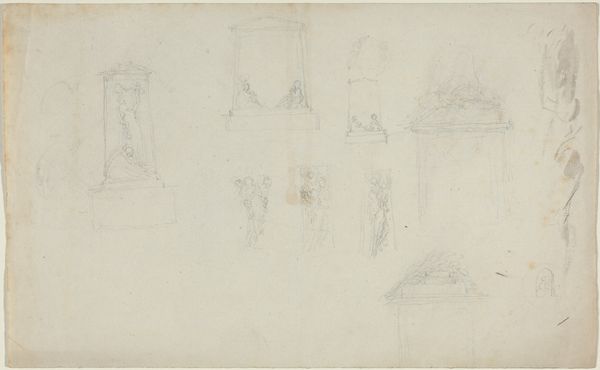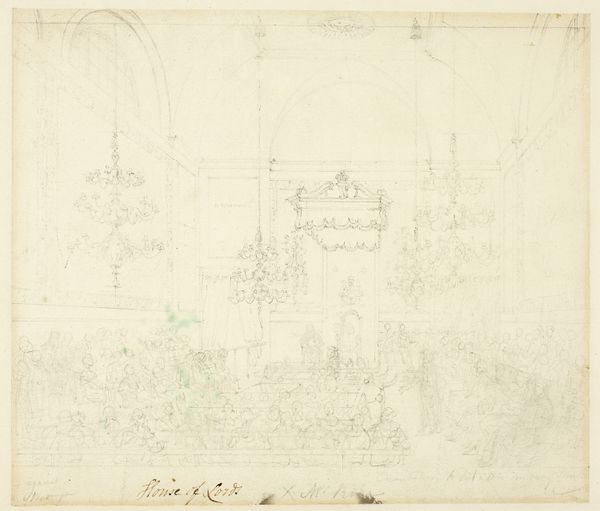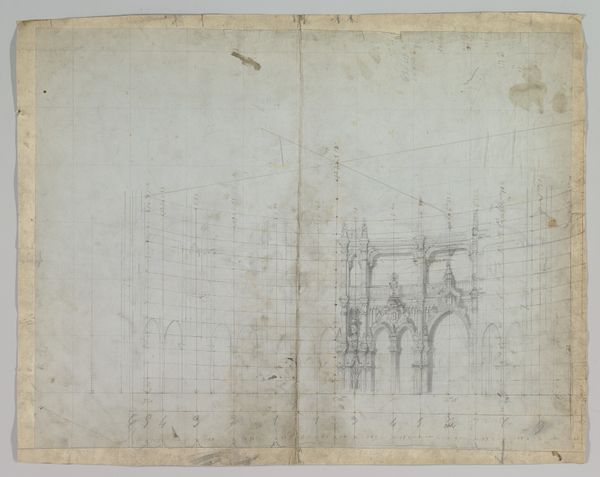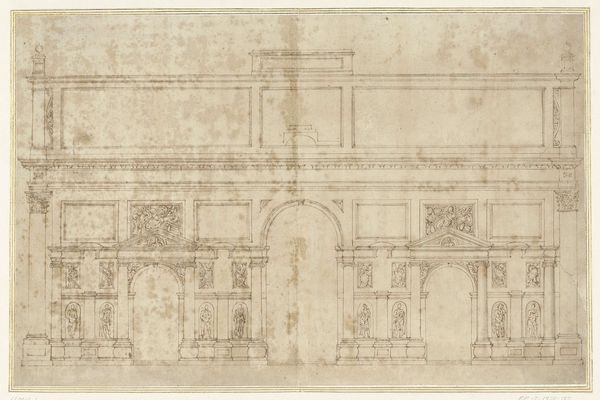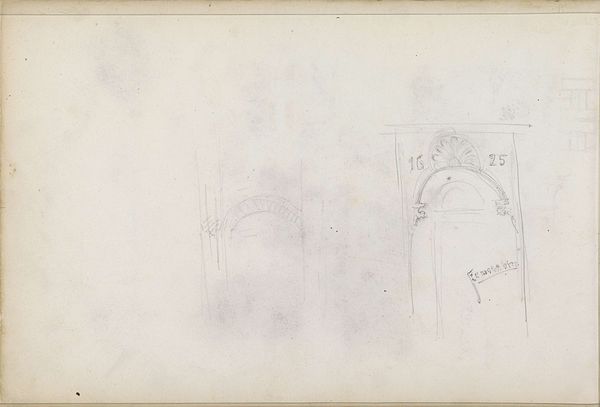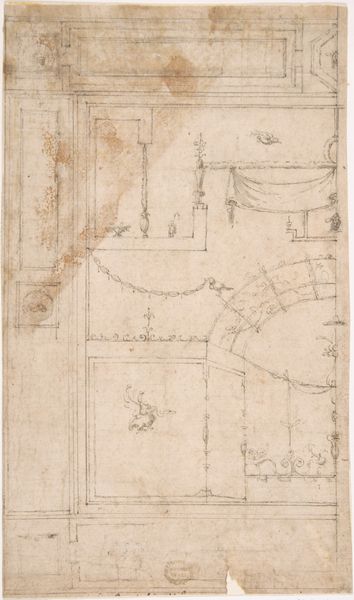
drawing, architecture
#
drawing
#
water colours
#
form
#
11_renaissance
#
line
#
watercolor
#
architecture
Dimensions: 403 mm (height) x 294 mm (width) (bladmaal)
Editor: We're looking at a work titled "Sketch for an arch and the base? of a column," made between 1556 and 1629 by an anonymous artist. It appears to be a watercolor drawing showcasing some architectural design. I'm really drawn to its minimalist quality, even in its incompleteness. What can you tell me about the cultural or historical context of architectural sketches like this? Curator: It’s interesting that you mention the "incomplete" nature. I wonder, to what extent was it *intended* to be complete? During the Renaissance, drawings like these weren't always conceived as standalone works. They served a crucial purpose within the architectural process itself. Think of architectural patronage at that time. To whom might such a sketch have been presented and how might its aesthetic impact –its apparent ‘minimalism’–have factored into securing commission or funding? Editor: That's a really interesting point, that this might have been to persuade someone to invest! I hadn't thought about that. So it was probably for someone powerful, but also someone who could read an image, right? Someone who appreciated art or understood architecture? Curator: Precisely. The ability to ‘read’ architectural drawings, and to understand their representational conventions, became increasingly important for those in positions of power during the Renaissance. How could art advance or legitimize power? Consider the Medicis for example... Or papal construction in Rome... Editor: So this drawing is like a window into not just architectural style but also Renaissance power dynamics, a time when visual literacy among patrons was growing and affecting artistic production! It is less a solitary object of art and more a medium between architects, politics, and possible money, if they persuade those who understand what these drawings represent? Curator: Exactly! It's less about the finished object, more about this key step in the larger machinery of power and influence at that time. Editor: I never would have considered all the politics wrapped up in this one architectural drawing. That really adds a layer of richness to understanding it. Thanks so much!
Comments
No comments
Be the first to comment and join the conversation on the ultimate creative platform.
